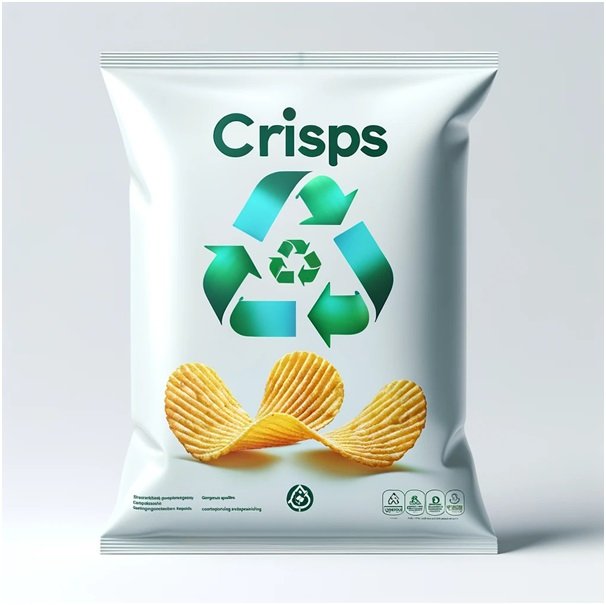Crisps come as popular products on store shelves. People tend to buy them to have a snack on the run. However, along with food popularity, the issue of package disposal arises. Here is some statistical data that demonstrates the current situation in the packaging industry. Customers consume around 6 billion packets of crisps yearly in the UK only, with 16 million of them being sent to landfills without proper disposal. This fact contributes to the pollution issue and aggravates the problem significantly.
Below, we’re going to answer the question “What are crisp packets made of?” and discuss what greener alternatives the modern packaging industry is ready to offer to reduce the negative impact on the environment.
Materials & Compositions of Modern Crisp Packaging
Basically, 95% of crisp packaging is produced of plastics. These are multilayer structures from different types of plastics. PET (polyethylene terephthalate) comes as the most popular material for wrapper manufacturing. Crisp packages have a metalized inner layer that is applied to enhance barrier properties (protect from water, gases, and external impurities), preserve freshness, and prolong product shelf life.
The combination of several layers produced from different materials makes the recycling process more complicated or even impossible, meaning that used packages cannot be disposed of correctly. In this regard, researchers seek more sustainable solutions for packing food.
Some manufacturers use alternative materials in trying to make packages sustainable. For instance, Pringles tubes consist of a cardboard tube, a metal base, an inner foil, and a plastic cap. These materials are perfectly recyclable on their own, however, when combined in one package, it becomes extremely complicated to separate different parts of the tube, which impedes the recycling process.
How is Crisp Packaging Recycled?
Chasing effective waste management, manufacturers try to recycle wrappers. The following strategies are the most common:
- They collect the used packets from different manufacturers.
- Process them into new, recycled raw materials by using specialized machinery.
- Transform secondary raw materials for the production of plastic pellets, bags, etc. Some brands develop innovative solutions, such as clothes production from reused materials.
The use of recyclable materials allows for reducing not only the amount of waste but also expenses on the manufacturing process.
Do Biodegradable Packages Exist?
Living in a world, where the amount of garbage rises daily exponentially, makes humans think about our common future and seek ways for proper waste disposal and recycling. Thus, the packaging industry develops innovative solutions to create eco-friendly, easily recyclable packages.
New technologies introduced in modern chemistry allow for making food wrappers eco-friendly, biodegradable, and compostable. Here are examples of successful solutions for packing crisps.
- The development of nanosheet, a thin layer produced from water and amino acids. It can be applied to wrapping paper or PET, making them suitable for recycling while preserving strong barrier properties. This solution has already passed the crumple test and demonstrated excellent results. In terms of chemistry and interaction with food, this solution is 100% safe and non-toxic. So, activists expect that this solution will come through the regulatory process in about 4 years.
- The use of monomaterial packaging. When the wrapper consists of several layers of one material, it can be perfectly recycled. Moreover, the combination of modern PET layers is not inferior to poly structures. Monomaterial covers have excellent moisture and oxygen barrier properties, satisfying the demand for freshness and quality.
- The implementation of recyclable materials of natural origin. For instance, clay-based materials feature high resistance to external impacts and perfectly preserve the taste, aroma, and physical characteristics of food.
The introduction of these solutions is designed to replace single-use plastics, which will lead to the reduction of waste on the Earth. Sustainable technologies are aimed at forcing manufacturers to turn to green production.
Now, you know the answer to the question “What material are crisp packets made from?”. The introduction of innovative high-tech solutions for packing products helps slow down the pace of Earth contamination and makes the food packaging industry eco-friendly and more efficient.

